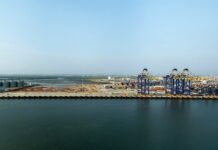June 2020 threw a massive surprise, holding up the fiscal year urea off-take that ended at a little over 6 million tons for FY20. This is just a 1 percent year-on-year increase, but it seemed distant last month, and the day was saved by highest ever June urea off-take at 1.16 million tons. There is no specific June reason for the record sales, as the budget was a non-event and there was no anticipation around, signaling any anticipatory buying, wrote Business Recorder newspaper on Thursday.
This could just have been a case of farmers engaged with locusts or delayed sowing of the season’s crop. Urea prices in June 2020 at Rs1632 per 50 kg bag are at nearly two-year low, as the government intervened after the GIDC saga. The average urea price for FY20 at Rs1856/bag was 5 percent higher year-on-year.
The price decline hastened in the second half of the fiscal year, and the total spending on urea in FY20 at Rs223 billion – highest since FY15 was 6 percent higher year-on-year. The volumetric increase during the period was 1 percent, whereas the price increase was 5 percent. This is safe to say that in terms of both off-take and spending – FY20 was a good year for the farmers. The past many years have seen urea spending stutter due to abnormal price hikes.
The situation with the phosphate fertilizer was not as rosy; despite a meager 1 percent year-on-year increase in average DAP prices for FY20. The DAP off-take went down 10 percent year-on-year to 1.9 million tons – lowest since FY16. The nitrogen to phosphate (NP) application ratio, which had started to improve in the yesteryears, also notched a 5-year low at 3.03 – a far cry from the ideal ratio of 1.75. DAP spending in FY20 went down by 7 percent year-on-year, primarily driven by low volume. So, while there may have been 6 million tons of urea sales after a long time – it won’t necessarily translate into improved yields, as the NP ratio indicates. The total urea and DAP spending stayed virtually at last year level of Rs365 billion. Surely, the famers could have instead spent a few more billions on DAP as various other input costs have either gone down or stayed the same.
Diesel has become cheaper, tube well electricity prices have remained unchanged from last year, and crop support prices were decent too. However, what is holding the farmers back from more balanced application needs more probing.
























